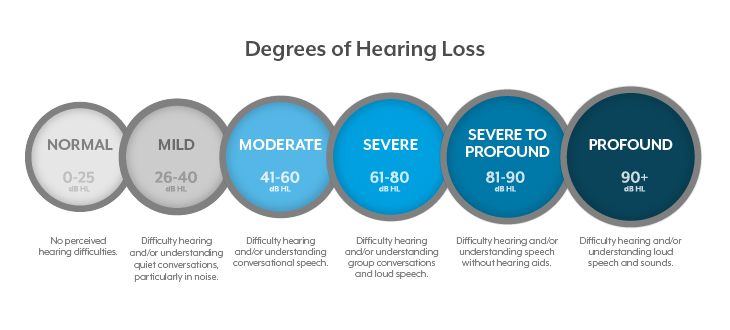
The severity of hearing loss is typically measured in decibels (dB) and classified into different categories. The extent to which hearing loss is considered “too much” varies based on individual factors, the type of loss, and the impact it has on a person’s quality of life. The American Speech and Hearing Association (ASHA), classifies degree of hearing loss as follows:
- Normal: Hearing thresholds between -10 to 15 dB. People with normal hearing can hear most sounds without difficulty.
- Slight: Hearing thresholds between 16 to 25. People with slight loss should continue to monitor their loss or consider treatment if it is effecting their quality of life.
- Mild: Hearing thresholds between 26 to 40 dB. Individuals with mild loss may have trouble hearing soft or distant speech.
- Moderate: Hearing thresholds between 41 to 55 dB. People with moderate loss may struggle to hear regular conversation and often need to ask others to speak louder.
- Moderately-Severe: Hearing thresholds between 56 to 70 dB. Those with moderately severe loss have difficulty hearing even loud speech.
- Severe: Hearing thresholds between 71 to 90 dB. Individuals with severe loss may only hear very loud sounds or amplified speech.
- Profound: Hearing thresholds 91 dB or more. Those with profound loss may not be able to hear even the loudest sounds.
It’s important to note that loss can be gradual, and people may not always recognize the extent immediately. If you suspect or notice difficulty in hearing conversations, sounds, or if others frequently ask you to repeat yourself, it’s essential to consult with an audiologist or hearing healthcare professional. Early intervention and appropriate management can significantly improve a person’s quality of life and communication abilities. They can help determine the severity/degree of loss and recommend suitable treatments, such as hearing aids, assistive listening devices, or other interventions based on individual needs.
